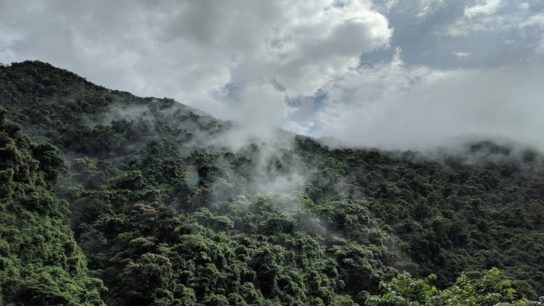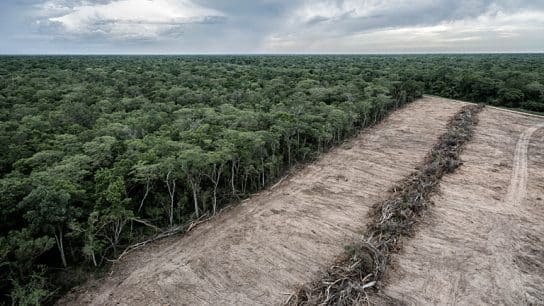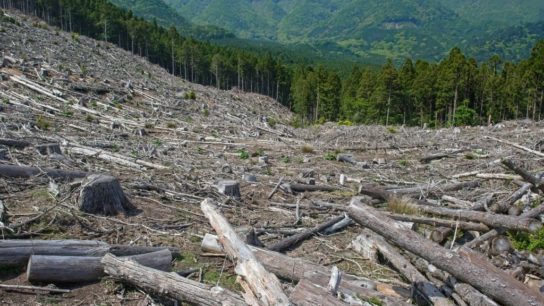Hot, wet, acidic, and dangerous – tropical peatlands are excruciating to study, but understanding them may hold the key to maximizing their potential as a global carbon sink.
—
Peatlands cover 3.7 million square kilometres and are the most efficient carbon sink on the planet. What remains of near-natural peatland – about 3 million square kilometers – sequesters 0.37 gigatonnes of carbon dioxide a year. Meanwhile, damaged peatlands are a major source of greenhouse gas emissions, responsible for almost 5% of global anthropogenic CO2 emissions.
Despite their importance, tropical peatlands are often overlooked.
“Tropical peat is different from temperate peat,” Lullie Melling, Director of the Sarawak Tropical Peat Research Institute, explained to Earth.Org. She explained that peatlands have unique flora and fauna, with different tree species and forest types depending on the area. Tropical peat soil is also 100 times more acidic than temperate peat, she added.
Carbon per volume is relatively lower in tropical peat, but the carbon content per square kilometer can be higher because tropical peat reaches depths of 10 or even 20 meters (33-66 feet), compared to just 1-5 meters in temperate or boreal peat. As a result, tropical peatlands, accounting for a fraction of global peatland area, store total carbon somewhere between 50 and 88 gigatons – equivalent to a decade of the entire output of the United States.
Peatlands also provide livelihoods for local communities and support biodiversity, with rare species such as the carnivorous pitcher plant thriving in these areas.

Tropical peat is now threatened by moves to drain it for perennial crops, as well as for oil palm plantations or pulp and paper trees. As Melling explained, “while people have been draining peat in Europe for 200-300 years, people have been draining peat [in Southeast Asia] for only 50-60 years.”
While some rehabilitation of tropical peatlands is possible, full restoration is impossible in the short or medium term. “You can never make a [damaged peatland] into a virgin again,” Melling said.
Around two million hectares of peatland are unmanaged in Indonesia, Melling said. “People open up the land for logging, or for agriculture, or sago. They do land clearing without understanding that it’s peat soil,” she explained.
Because peat has a high organic matter content, peat soil, once drained and dried, is highly combustible compared to ordinary soil. When drained peat burns, it generates significant greenhouse gas emissions as well as a choking haze.
For example, fires in Indonesian peat swamp forests in 2015 emitted nearly 16 million tons of carbon dioxide (CO2) in a single day, the equivalent of more than a thousand coal-fired power plants. In 1997, an ill-conceived one million hectare mega rice project resulted in the Kalimantan ecological disaster, one of the world’s biggest peat fires. This catastrophe created smog throughout Southeast Asia and generated emissions equivalent to somewhere between 13-40% of global annual CO2 emissions from fossil fuels.

However, the practical difficulties of navigating tropical peat forests means that they are not understood as well as their temperate counterparts.
“Tropical peat is not as well researched. It’s very tough to do it,” said Melling. Teams from the Sarawak Tropical Peat Research Institute must walk on wet, porous, uneven peat surfaces, dodging tree roots and buttresses and wade through the flooded part of the forest to get to the study site.
Heat exhaustion is common in temperatures above 40C in open-canopy peatland, as well as skin sores from the highly acidic peat. In addition, tropical peat is less dense, making it more dangerous to traverse. “In Europe you can see a cow walk on top of peat, but here it can’t even hold a human foot because the porosity is very high,” explained Melling.
Tropical peatland is said to suffer from the “Cinderella syndrome” – unknown, and therefore unloved. While peat is one of the many topics of discussion at the global level, including COP climate conferences, little funding is available for research and rehabilitation of tropical peatlands. As a result, although tropical peat swamp forests have been intensively exploited due to the valuable timber species that grow there, there is still insufficient information on areas such as the long-term effects of logging on the regeneration phase of flora in peat swamp forests.

The Sarawak Tropical Peat Research Institute aims to address this, with studies on topics like greenhouse gas flux measurement, peat decomposition, and the effect of nitrogen on greenhouse gas and microbial diversity.
Rehabilitation efforts now focus on maintaining the ongoing carbon sequestration of peat, protecting biodiversity and other peatland services and preventing peatland fire. One promising area for development is sago palm, which can provide an economic return as a starch crop without damaging tropical peat. Unlike crops like rice, which requires intensive drainage and soil modification, sago palms flourish in acidic, frequently-flooded, nutrient-poor habitats with only minimal intervention.
Melling’s dream for peat is simple: “Protect it. Don’t open up any more peatland. Increase the productivity of the existing land. People should be aware of its importance, and try to have a commitment to protect this area.”
Featured image: Sigit Deni Sasmito/CIFOR.
This story is funded by readers like you
Our non-profit newsroom provides climate coverage free of charge and advertising. Your one-off or monthly donations play a crucial role in supporting our operations, expanding our reach, and maintaining our editorial independence.
About EO | Mission Statement | Impact & Reach | Write for us














